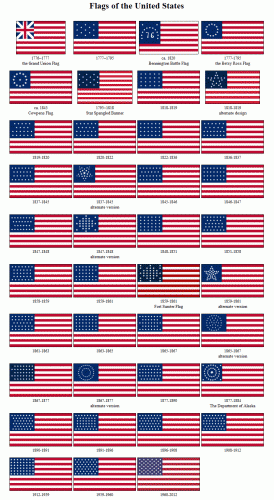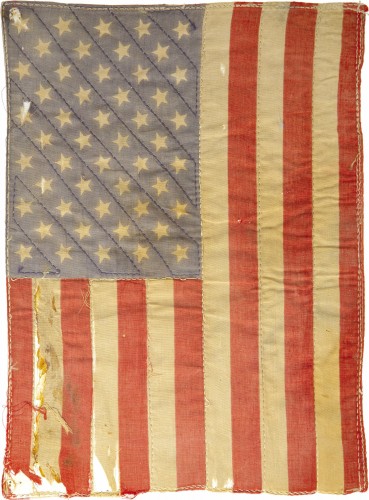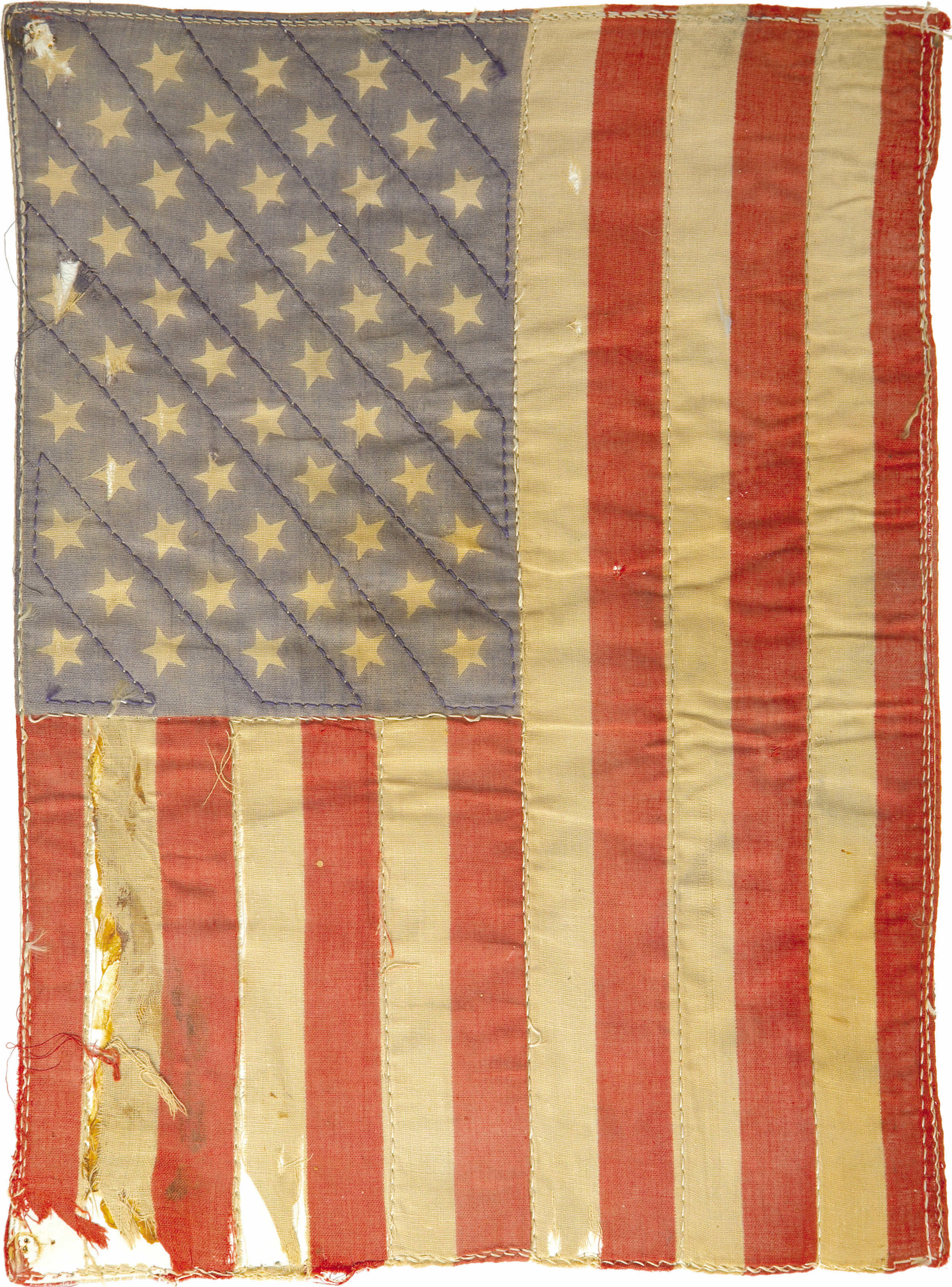Happy Fourth of July to all my US readers! I made this handy guide for how the flag has appeared throughout the history of the United States, so if your play is set during a specific year and it calls for a flag, you can quickly see the number and layout of the stars needed.

The layout of the stars was officially standardized in 1912, while the colors were standardized in 1934. In the guide above, I put the most typical flag of the period first, with alternate patterns and special flags listed after. Starting in 1818, the new flags were introduced on July 4th of the year listed.
In 1942, the Federal Flag Code was passed to provide uniform guidelines for the display of flags. One frequent complaint from flagophiles about many movies is the incorrect positioning of a flag in the vertical position. According to the code, the blue part should be on the left.

For more about the code, check out this illustration of how to display the flag. This of course brings up the prop master’s dilemma; if it is a “common” mistake to display a hanging flag with the blue field on the right, then it is conceivable that the character in the play who hung the flag would have made the same mistake. In other words, dressing and decorating a set isn’t about doing what is correct, but rather what is truthful to the characters and world of the play. Just like a character may drink wine out of a coffee cup, so too may one wear a jacket made out of a flag. Here is a whole blog dedicated to finding incorrect displays of the American flag.
As an interesting side note, there is only place where an official flag is never brought to half-mast during a period of mourning. That place? The Moon.





